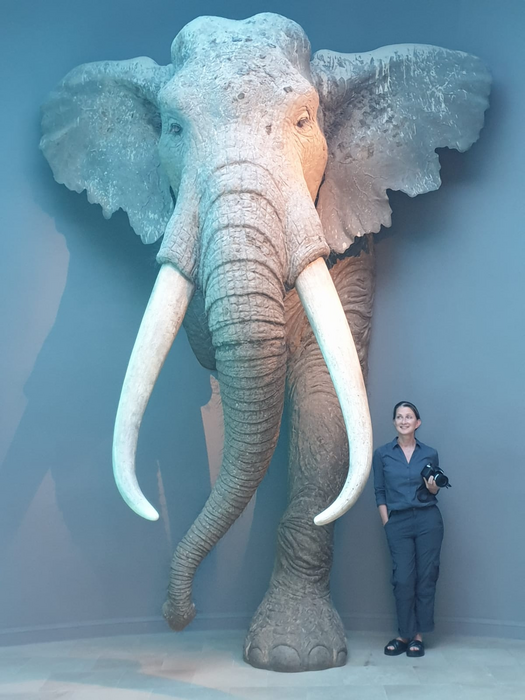Neanderthals hunted the largest land animals of their time, giant beasts that weighed twice as much as African elephants – or mammoths, for that matter. The achievement not only shows a level of organization (and courage) previously unconfirmed in our nearest relatives but could have shaped Neanderthal society in Europe between ice ages in a major way.
Earlier this year a team led by Professor Sabine Gaudzinski-Windheuser of the MONREPOS Archaeological Research Center reported cut marks on bones of straight-tusked elephants (Palaeoloxodon antiquus) at Neumark-Nord 1 in Germany from around 125,000 years ago. Although at first sight the marks could have been the result of scavenging on individuals that died from other causes, Gaudzinski-Windheuser and colleagues argued bones treated in this way were so abundant at the one site that they must have been hunted there instead.
However, this discovery raised the question of whether there was something distinctive about Neumark-Nord, or if giant elephant hunting was a more widespread practice. Now, these authors have answered their own question using Palaeoloxodon bones from two other sites in modern-day eastern Germany, Gröbern and Taubach.
The common feature of the three sets of bones (besides all being quite close together) is that all were created around 125,000 years ago, during the last interglacial period when the Earth was at a similar temperature to today. Only one elephant carcass is available from Gröbern for study, and only 17 of the bones from Taubach display cutmarks. Nevertheless, the similarities were striking.
“We identified in both assemblages similar butchering patterns as at Neumark-Nord, demonstrating that extended elephant exploitation was a widespread Neanderthal practice during the (early part of the) Last Interglacial,” they write. These sites also reveal the same bias seen at Neumark-Nord towards adult male Palaeoloxodon, much larger than the females, but probably traveling along rather than in herds.

Life-sized reconstruction of a bull straight-tusked elephant (P. antiquus) in the Landesmuseum for Vorgeschichte, Halle, with Dr Sabine Gaudzinski-Windheuser for scale
Image Credit: Lutz Kindler, LEIZA (CC BY-NC-ND)
Toothmarks at Taubach indicate large carnivores also got at the bones, but these were rare enough to suggest the Neanderthals were able to keep their competition at bay for a long time. On their own, Gröbern and Taubach could have represented fortunate Neanderthals coming across a recently dead elephant. However, seen in the light of Neumark-Nord, it looks more likely that hunting was a feature of the region’s Neanderthals during this warm era.
Unless elephant killing was the extreme sport of its day, undertaken without being too worried about maximizing benefit, the Neanderthals must have had a way to make use of these giant beasts. The team calculated that you could get enough meat to provide a Neanderthal’s daily calorie needs 2,500 times over from a single Palaeoloxodon individual – and not even a particularly large one.
Unless the hunters had a way to preserve the meat it would have spoiled quickly, even in winter.
Consequently, the authors reason, Neanderthals either had preservation techniques we are not aware of – and were able to implement them fast – or they came together in large numbers to consume such abundance. Either would change our view of Neanderthal society, at least in Germany. Most likely, the paper proposes, the truth is a combination of the two. Moreover, it would have been impossible for a small group to carry too much meat with them. If they were preserving it, they must have stayed nearby for a long time to make full use, rather than being constantly on the move.
The study is published open access in the journal Proceedings of the National Academy of Sciences
Source Link: Elephants Twice The Weight Of Mammoths Were Hunted By Neanderthals 125,000 Years Ago